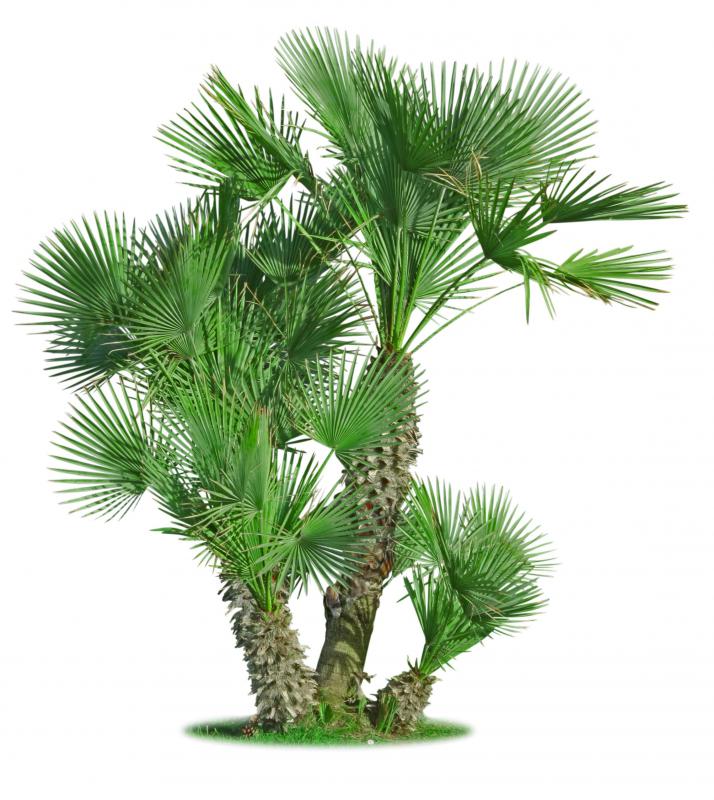At WiseGEEK, we're committed to delivering accurate, trustworthy information. Our expert-authored content is rigorously fact-checked and sourced from credible authorities. Discover how we uphold the highest standards in providing you with reliable knowledge.
What are Palm Trees?
Palm trees are trees in the family Arecaceae, sometimes referred to as Palmae. Palms are widely distributed in the tropical regions of the world, with some species venturing into subtropical or even temperate zones, and there are around 2,600 individual species of palm tree, all told. This family has a number of uses among humans, ranging from the practical to the decorative, and many people are familiar with the palm tree, thanks to its frequent use as a symbol of the tropics.
When people think about palm trees, they usually conjure up an image of a tall tree topped with a crown of extremely large compound leaves. The tree may be located on a remote beach under a bright blue sky near some inviting tropical waters, for the more imaginative among us. While this image certainly describes one type of palm tree (and ideal vacation, for some), palms are actually quite diverse, and many species look very different from this idealized image.

Basically, palm trees break into two main types. Some produce a single tall shoot, like the imaginary tree described above, but others produce a cluster of shoots close to the ground, creating more of a thicket than a single distinctive trunk. While the leaves of palms are compound, meaning that multiple leaflets are attached to the same stalk, they may be palmately or pinnately compound. Palmately compound leaves splay out like a fan, or the palm of the hand, while pinnately compound leaves have a feathery look.

Depending on the species, a palm tree may have a trunk which is usable for timber, nuts which can be pressed for oil, or fruits which may be harvested for foods, like coconuts, betel nuts, and dates. Palms can be used to make palm wine and a variety of other liquors, and their leaves can be used in thatching and other home improvement projects, or as plates in some regions of the world. Some palms can be used for fibers to make everything from rope to underpants, and there are a number of other uses for palm products.

Palm trees are among the most ancient of tree species, demonstrating that they found a niche and stuck with it. Some historians have suggested that the survival of early human societies is due in no small part to the palm tree, which offered shelter, food, and trade goods. The palm is also a very ancient symbol, with many ancient cultures associating palm branches with victory in battle.

In addition to having practical uses, palm trees have long been prized as ornamentals in climates where they can thrive. Because palms grow slowly, they are quite expensive, since it can take decades for a palm to grow to a reasonable height. With a wide variety of species to choose from, gardeners can use an assortment of palm trees in a variety of ways, and fully-grown palm trees can command very high prices when they are transplanted, as for example when tropical cities want mature trees to line a newly-build roadway. Growing palm trees is also finicky business, as these trees have very specific soil, climate, and environmental needs.
Some palm species are threatened or endangered. Palm trees are sometimes harvested mature in the wild, putting pressure on the slow-growing populations, and others are exploited for their products, threatening traditional ways of life in addition to the palms themselves. Like other plants and animals, palm trees are also vulnerable to habitat damage, climate change, and other environmental factors which make it difficult for some species to survive.
Many garden suppliers in the tropics stock palm trees for gardeners who wish to grow them, but it's a good idea to research the particular needs of a specific species to ensure that you are prepared. Some palms, for example, like full sun and minimal water, while others need lots of shade and very moist soil.
AS FEATURED ON:
AS FEATURED ON:














Discuss this Article
Post your comments